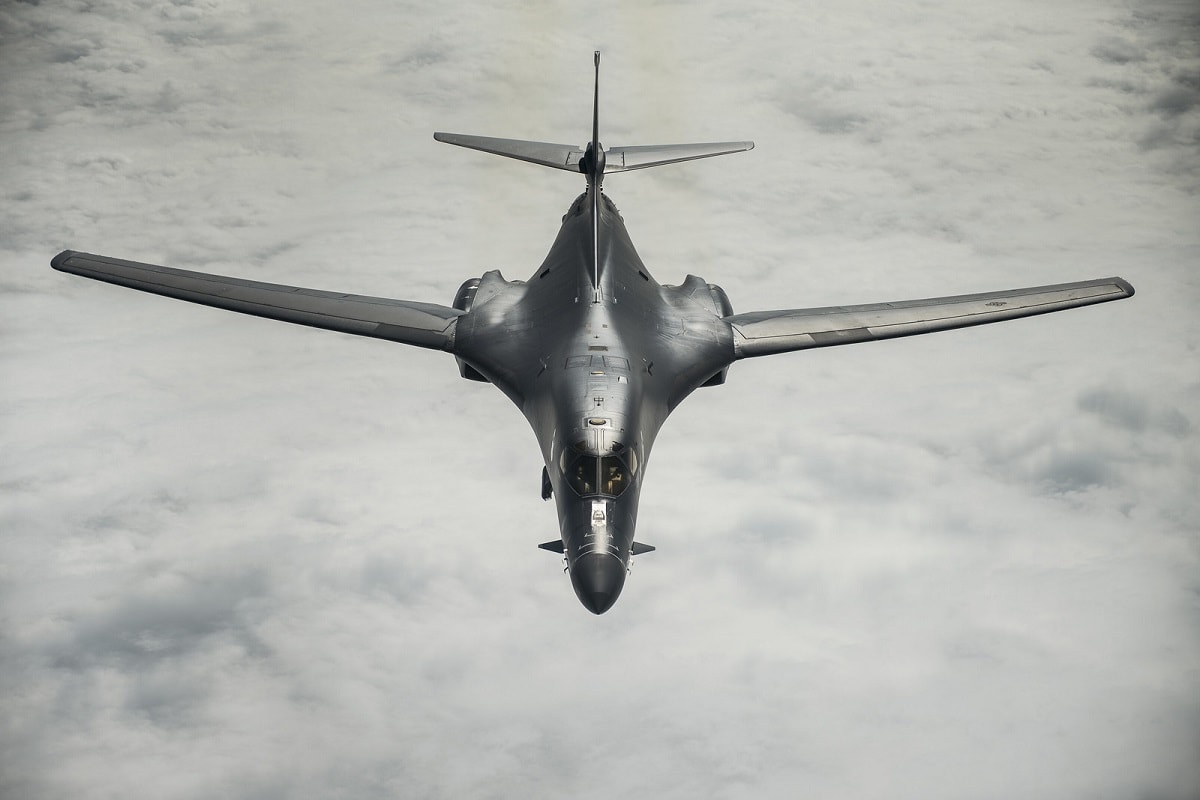Does the United States have a bomber force strong enough to win a hypothetical war with Russia, or one with China? How about a war that pits the United States against both countries? The answer is incredibly complex and depends on many factors—it’s about more than just fleet numbers.
Diversified Capabilities, Multiple Roles for Bombers
The United States’ fleet of bomber aircraft is of course not meant to win a war alone. In the event of a conflict, bombers aim to excel in three primary roles: providing the U.S. Air Force with long-range strike capabilities, using both conventional and nuclear weapons; holding very distant targets at risk; and penetrating complex, highly contested air environments that are well protected by enemy air defenses.
Four models of bomber aircraft achieve those goals to varying degrees for the Air Force.
B-52 Stratofortress
The B-52 is the oldest bomber in active service with the Air Force. It first flew, coincidentally, in 1952. The B-52 was the bomber workhorse for much of the Cold War and continues to serve today thanks to its immense payload capacity and extensive range.
And thanks to an ongoing reengineering program, B-52s will serve into the 2050s, which will make them the longest-serving aircraft in history.
B-1B Lancer
The Lancer is the United States’ only supersonic bomber, as well as the only variable-sweep-wing aircraft in active service with the Air Force. Originally intended to fly fast and low beneath Soviet radar, allowing it to safely overfly air defenses, the jet is noted for its large payload capacity and speed, despite lacking some performance compared to its original design goals.
Under the New START agreement with Russia, the Lancer’s ability to deliver nuclear weapons was disabled.
B-2 Spirit
The B-2 holds the distinction of being the first operational stealth bomber in the world. To that end, the Spirit’s flying-wing design gives the bomber a low radar cross-section. The Spirit is designed to penetrate enemy air defenses.
Like the Lancer and Stratofortress, with aerial refueling, its range is essentially unlimited.
B-21 Raider
Named to honor the 1941 Doolittle Raid against mainland Japan, the Raider is not yet in service, but it is undergoing testing. The B-21 has a flying-wing design similar to the B-2 Spirit. Air Force officials say it will be considered a sixth-generation aircraft thanks to its highly advanced stealth features.
The Raider may be somewhat smaller than the B-2 Spirit, placing physical limitations on payload and fuel capacity, but the Air Force would like to purchase at least 100 of these bombers.
The Question of Quantity versus Capability
The number of bombers currently in active service with the Air Force is considerably smaller than the total number of fighters, tankers, reconnaissance planes, helicopters, tiltrotors, and other aircraft in service with the Air Force, Navy, Marine Corps, and Army.
But, bombers’ value is in the outsized impact they can exert in a conflict, both in limited tactical situations as well as at the strategic level, thanks to their unmatched payload capabilities, range, and, in the case of the B-2 and B-21, their stealth capabilities.
The strength of the bomber is in its support. Bombers’ success hinges on being bolstered by tanker aircraft, armed with updated information from reconnaissance planes and satellites, and protected by fighter jets and electronic warfare assets.
China and Russia: A Thought Experiment
Russian and Chinese air defenses are substantial. Dense layers of air defenses, especially over important command-and-control nodes, cities, and other valuable targets, pose a significant challenge to the B-2 Spirit and B-21 Raider stealth bombers.
A hypothetical conflict against just one of those adversaries would be a big operational and logistical challenge—a two-front war, even more so. Bomber numbers alone would not dictate the outcome of a two-front bombing campaign; the distribution of the bomber force, as well as the composition of the fleets, would be very important.
The B-21 Raider’s ongoing development indicates that the Air Force is aware of the survivability limitations of non-stealthy aircraft like the B-52 Stratofortress and the B-1B Lancer bombers.
Acquisition numbers of at least 100 B-21s support this notion and suggest the Air Force knows that the Raider’s stealth and power make it best bet as an effective, survivable platform in the face of sophisticated air defenses.
Air Force Bombers in Trouble?
There is not a single, simple, yes-or-no answer to the question of whether the Air Force has enough bombers. From a strictly numerical standpoint, the fleet is somewhat smaller and more limited than it has been in the past. However, bombers do not operate alone, but in tandem with a variety of assets in space, in the air, and on the ground.
As such, they are an absolutely crucial component of the United States’ strike and nuclear-deterrence strategies.
The American bomber fleets could meet the strategic needs of conventional strike and nuclear deterrence in a hypothetical war with China or Russia.
However, in a broader war over multiple theaters, the bombers’ ability to carry out these missions successfully would come under severe strain.
About the Author: Caleb Larson
Caleb Larson is an American multiformat journalist based in Berlin, Germany. His work covers the intersection of conflict and society, focusing on American foreign policy and European security. He has reported from Germany, Russia, and the United States. Most recently, he covered the war in Ukraine, reporting extensively on the war’s shifting battle lines from Donbas and writing on the war’s civilian and humanitarian toll. Previously, he worked as a Defense Reporter for POLITICO Europe. You can follow his latest work on X.

